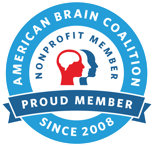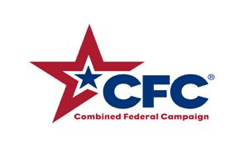Overcoming a fear of flying takes a lot of courage and practice. But it is possible with appropriate treatment. I never flew until I was almost 30 years old, and getting over my own fear of flying was one of the most difficult achievements of my life.
If you can successfully identify the triggers that produce your anxiety, you've taken the first step. It's important to note that fear of flying is not a single phobia. Most people who fear flying are claustrophobic, or frightened of being locked in the plane and unable to choose when to get off.
A phobia is an intense fear that is out of proportion to the danger, which is particularly relevant to fears of flying. Most “flight phobics” agree that flying is safe, yet frightening. They have a hard time reconciling their fear with safety statistics. Although we know our phobias are not logical, we cannot reason ourselves out of one.
Understanding Triggers
Our fears of flying have triggers, which are thoughts, images, sensations, and memories to which we have become sensitized. A person who is sensitized to certain bodily feelings might fear turbulence or normal take-off and landing. And someone who fears heights might become terrified thinking about flying many miles above the ground.
The list of triggers is long: turbulence, take-off, landings, terrorism, crashes, social anxieties, or being too far from home. Some people fear fire, illness spread through the air system, using the toilets, or violence on a plane. Others have a “bad feeling” about their flight, afraid that their anxieties will somehow predict a catastrophe.
Behind the Phobias and Fear
The common denominator for more than 90 percent of flight phobics is the fear that they will become overwhelmed with anxiety during the flight.
Usually people experience an unexpected panic while flying, and then they fear the terrifying symptoms will return during their next flight. These panics typically emerge between the ages of 17 to 34, around the time of a significant life change such as a birth, death, marriage, divorce, or graduation. That is why people with flying phobias often wonder why they had once been able to fly so comfortably. Very few fears of flying originate with a traumatic flight.
Fear of flying is quite common, but almost 20 percent of the population report that their fear interferes with their work and social lives. It’s not uncommon for fearful fliers to avoid vacations and job promotions. Experts divide fear of flying into three main groups; which one do you belong to?
- Those who don’t fly or haven’t flown for more than five years despite the opportunity to do so.
- Those who fly only when absolutely necessary with extreme terror.
- Those who fly when required, but with anxiety.
Elements of Successful Treatment
The “active ingredient” for overcoming phobias is exposure to feared triggers. It’s important to note that avoidance keeps your phobia alive and intense.
With fear of flying, there is a huge component of anticipatory anxiety, or the fear experienced in anticipation of taking a flight. Any successful treatment will help fearful fliers manage anticipatory anxiety (because many people avoid planning flights, or they just cancel them) as well as during a flight.
Newer treatments for fear of flying involve traditional methods of cognitive-behavioral therapy, or CBT, tailored to flying. Therapy includes techniques for managing anxiety, such as diaphragmatic breathing, to use while on the flight. People who are sensitized to bodily sensations during take-off, landing, or turbulence are desensitized to these triggers.
Education helps calm anxiety, too: how a plane flies, facts about turbulence, and the meaning of the various sounds and bumps during a normal flight. Virtual reality programs, during which fearful fliers are exposed to computer simulations of flight triggers, are also helpful. So, too, are flight simulators that are ordinarily used to teach private pilots how to fly small planes. (These are sometimes located near airports.)
Group therapy programs that meet at airports and culminate in a graduation flight with the therapist are available in many parts of country, including New York, Chicago, Los Angeles, Denver, and Minneapolis. They are particularly helpful in overcoming anticipatory anxiety and extending the treatment to the flight itself.
Medical treatment offers no perfect solution. Anti-anxiety medication (usually an SSRI or an SRNI) is helpful to some people who experience panic while flying, but they must be willing to take the drugs every day for a prolonged period of time. And they have little effect on anticipatory anxiety. The benzodiazepines can reduce anticipatory anxiety, but they also interfere with the therapeutic effects of exposure.
Having once been flight phobic myself, now I am constantly rewarded by the pleasure of being able to jump on a plane and fly anywhere in the world.
Written by ADAA member Martin N. Seif, PhD, ABPP. Dr. Seif is a master clinician who has spent the last thirty years developing treatment methods for anxiety disorders. He has also experienced first-hand the crippling effects of anxiety. His path to recovery led him to develop the Anxiety Disorder Treatment Program.





